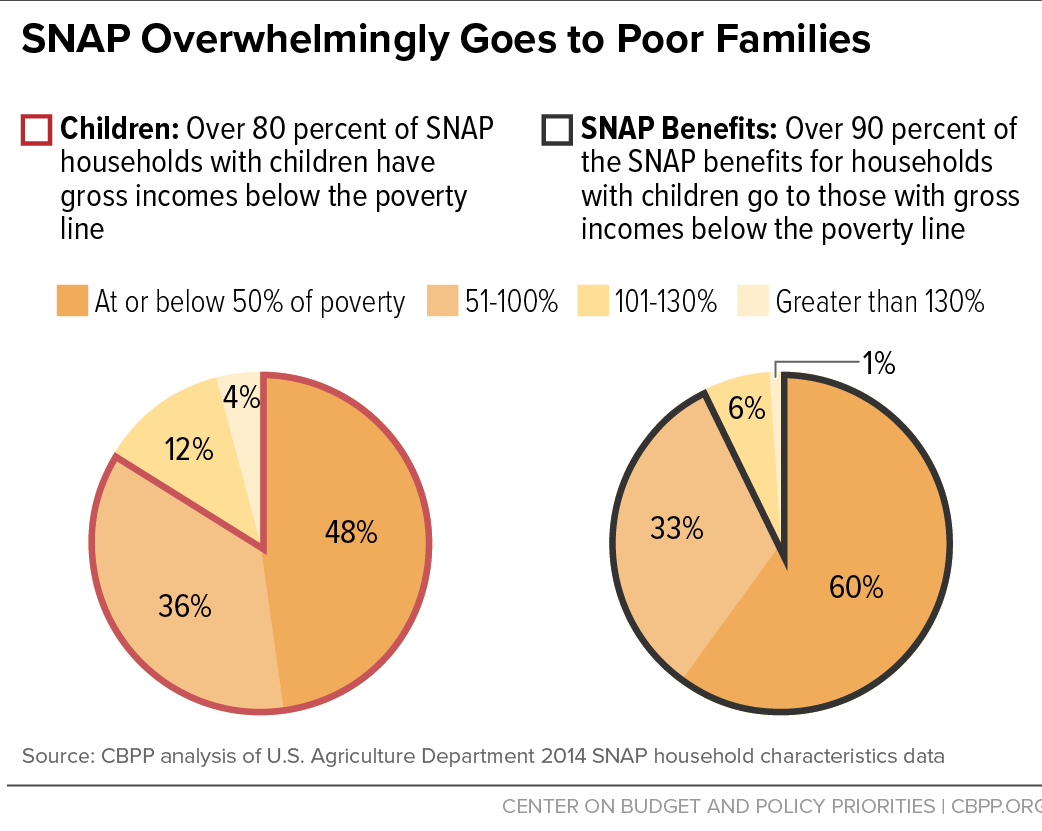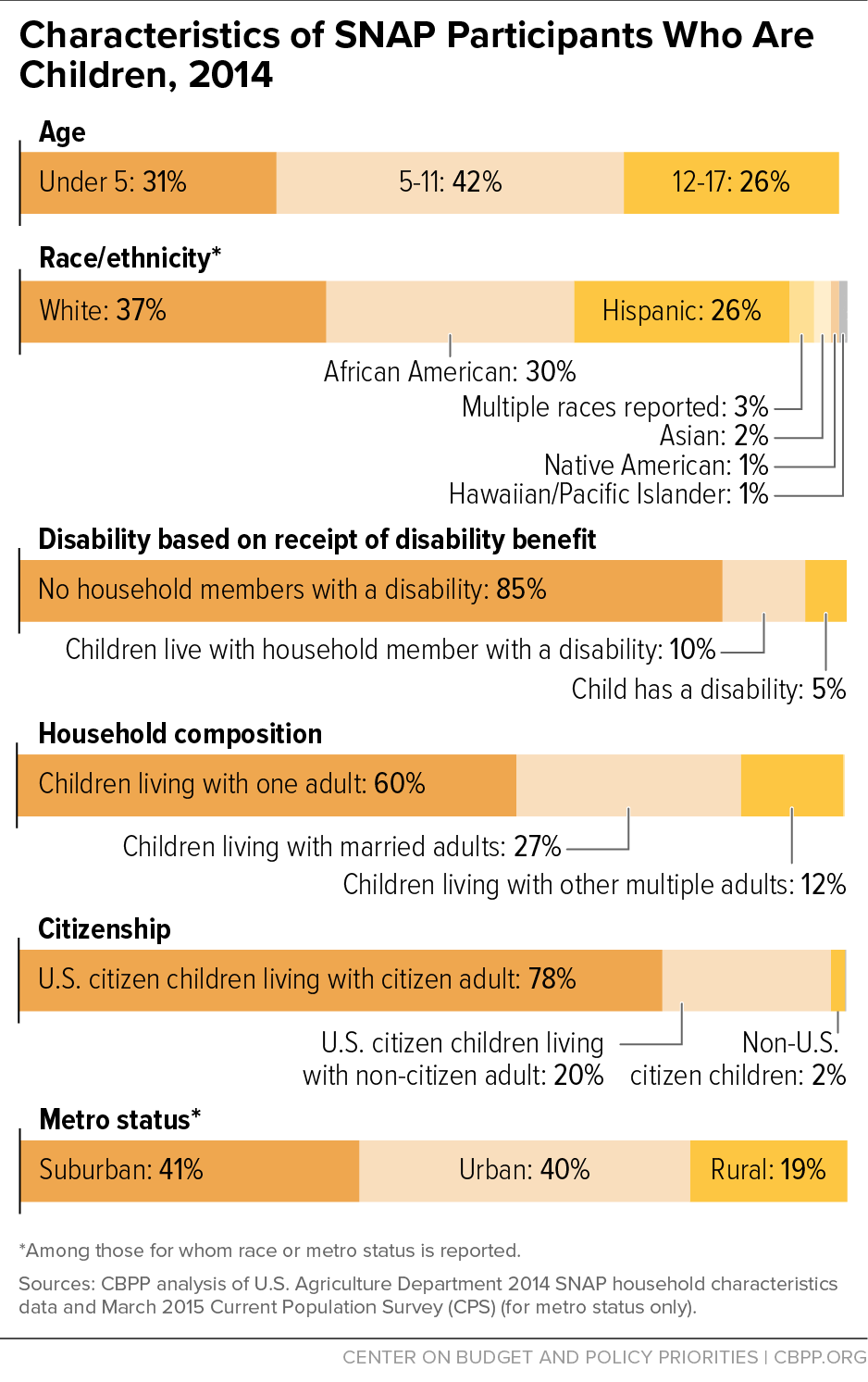BEYOND THE NUMBERS
I explained yesterday that SNAP (formerly food stamps) will help about 20 million children each month this year. Today, let’s take a closer look at who they are.
Among those children are kids of all ages, with a wide variety of races and ethnicities. They live in all types of communities, in many different types of families, as we describe in our new paper.
SNAP families with children do have one thing in common: their low monthly incomes make it hard for them to afford an adequate diet. Over 80 percent of SNAP households with children have gross incomes below the poverty line ($20,100 annually for a family of three in 2016) while they are receiving SNAP; nearly half have incomes below half of the poverty line. (See chart.)
Otherwise, SNAP serves a broad and diverse cross-section of America’s low-income families and children, as the chart below illustrates.
- SNAP children are diverse. Nearly a third of them are younger than 5 years old, two-fifths are 5 to 11 years old, and a quarter are 12 to 17 years old. Among the children who report their race and ethnicity, a little more than a third are white, nearly a third are African American, and a quarter are Hispanic. Virtually all participating children are U.S. citizens; 20 percent live in a household with at least one non-citizen. About 40 percent live in urban areas, 41 percent in suburban areas, and 19 percent in rural areas. About three in five children receiving SNAP live with a single adult.
- Few SNAP families with children receive cash assistance. Only one in seven households with children (15 percent) receive cash assistance (Temporary Assistance for Needy Families or state General Assistance) while participating in SNAP, mainly because a small share of families eligible for TANF cash assistance participate.
- SNAP helps families with disabled members. Five percent of SNAP children have a severe disability (that is, they receive a disability benefit, usually Supplemental Security Income), and another 10 percent live with a household member who receives disability benefits. (These figures don’t include people whose disabilities aren’t severe enough to qualify them for a disability benefit or who are awaiting a disability determination.)
We’ll be back tomorrow to discuss SNAP’s key role in reducing childhood poverty.


